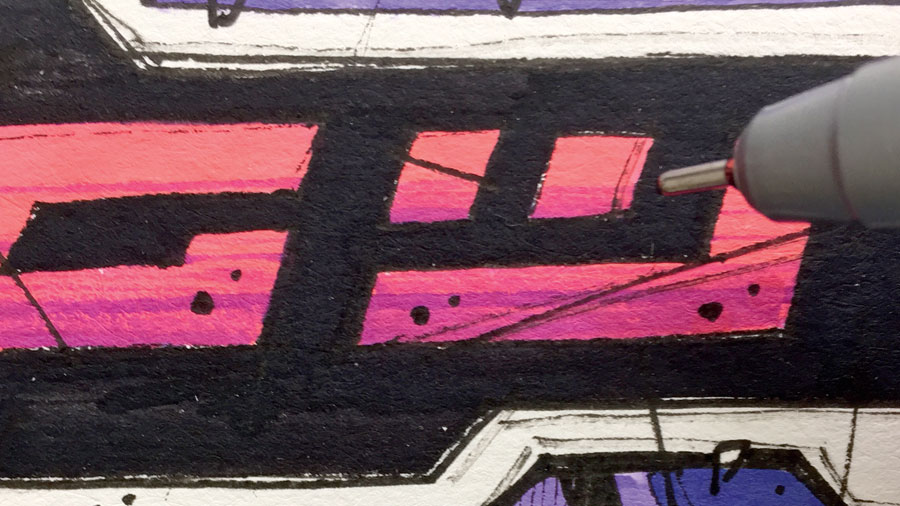6 quick tips to improve your brush pen drawing
Create colourful artwork using fineliners and brush pens.

I’ve always strived to develop my personal style, an artistic voice that speaks via tools and media. When I thought I had found it, I got completely lost at the same time. My vector graphics looked crisp and professional, but my hand drawing was stiff. I bought countless markers, gel pens and paints to experiment with.
So then I decided it was time to go back to basics and review my approach and started to draw with nothing but a pen. Just sketches with no intention to end up as finished artworks. I also tried to do the same digitally: one single layer and default brush. Surprisingly, it worked! There was a common theme between new works and drawings that looked completed despite being quickly drawn.
But curiosity drives me to experiment. I don’t use water with brush pens, I’ve never opened a blender marker, and I don’t apply an eraser to lead pencil. But I’m happy with that – my artistic voice comes through my personal style. Here I go over some of my top tips on creating artwork with brush pens.
(See our best pens post if you want to stock up on supplies. Or get more advice with our how to draw tutorials.)
01. Use vertical hatching

I draw with a black fineliner and add plenty of detail by applying lots of vertical hatching. I use two 0.8mm fineliners. The first one is new and gives me a thick line. The second one is old: perfect for dry, gritty and less-then-perfect lines.
02. Paint from light to dark

Since I use watercolour brush pens, I follow the rules in this piece, going from light to dark and leaving blank spots to create the light. I use two or three similar hues and layer them over each other with thin brush strokes: this helps to define my basic shadow spots.
03. Enhance the shadows

In this piece I use dark blue to create shadows on secondary elements. I paint with spots and long brush strokes, repeating the shape of certain elements. These brush pen strokes look darker when wet, just like watercolour. Check your work when the paint dries.
Daily design news, reviews, how-tos and more, as picked by the editors.
04. Use stylised text

This piece has a heavily stylised text element. To create this, I paint the header area with long, bold strokes of a contrast colour combination. I add violet to the corner to support the general composition. Now this picture looks organic, but the text is too crisp.

I add a gradient to the text for a more organic feel, using bold and thin strokes instead of smooth blending. You may have noticed that I’m afraid to use water!
05. Don't aim for perfection

I like to throw some occasional marks into the finished composition to give it a more natural look. I draw lines and particles with a dry fineliner. In this piece the text doesn’t look sterile anymore and blends well with the rest of the composition.

I reduce the tension between lines by adding dry fineliner strokes here and there. This can be compared to the mixing and mastering process in audio production, when you equalise instrument frequencies in order to create a well-balanced arrangement.
06. Sign your work, and leave it

To finish, I add a few spots of shadow with a dark grey brush pen and darken the teeth to push the character's fang towards the viewer. My Predator looks uglier and more aggressive – I like it a lot now! I sign my artwork, which means I'll never make any changes to it. The illustration is complete.
This article was originally published in issue 177 of ImagineFX, the world's best-selling magazine for digital artists. Buy issue 177 or subscribe to ImagineFX.
Read more:

